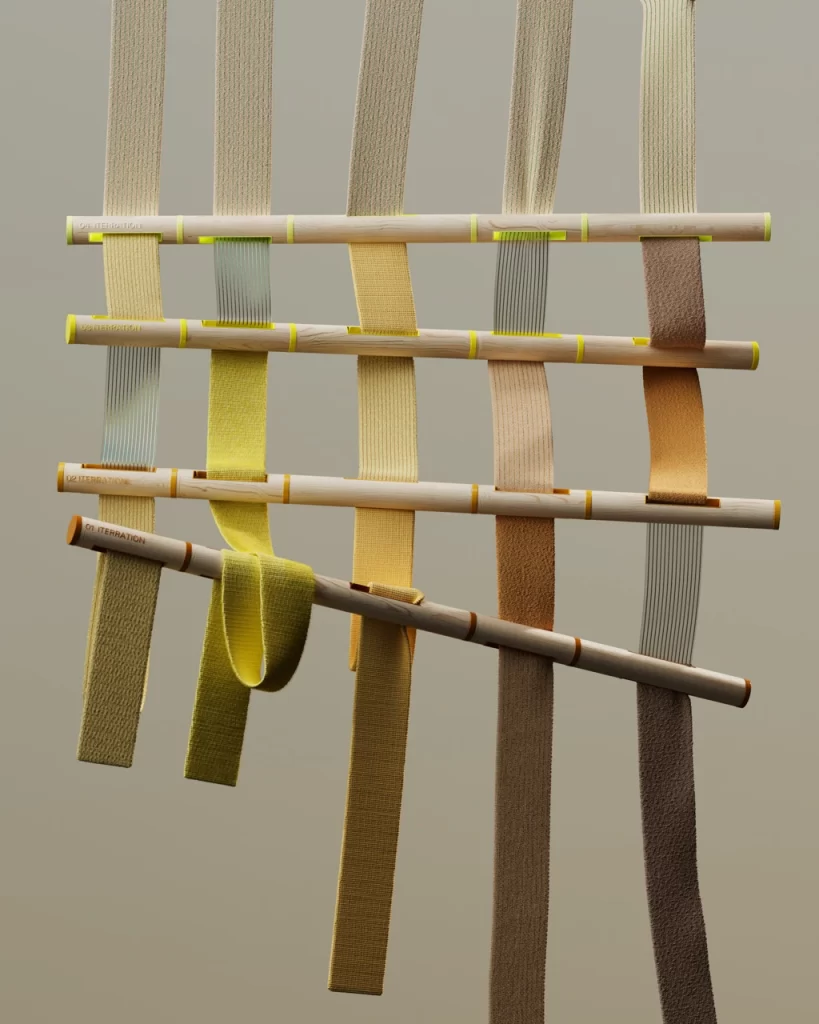
Understanding Fabric Weaves and Acoustic Properties
The acoustic performance of fabric weaves in acoustic panels is a crucial factor in designing spaces with optimal sound absorption. Different weaves can significantly influence how sound waves interact with the fabric, affecting the overall noise reduction capabilities. This blogpost explores the acoustic performance of various fabric weaves, emphasising their effectiveness in different applications.

Key Factors Influencing Acoustic Performance
Porosity and Texture
The porosity and texture of a fabric weave play a significant role in its acoustic properties. Porous weaves, such as those found in loosely woven fabrics, allow sound waves to penetrate the material more easily, leading to better absorption. Fabrics like burlap, with their open weave structure, are particularly effective at breaking up sound waves and reducing echo¹. In contrast, tightly woven fabrics, such as satin or silk, tend to reflect more sound waves, making them less effective for sound absorption².
Density and Thickness
The density and thickness of a fabric also impact its acoustic performance. Thicker and denser fabrics generally provide better sound absorption because they can trap more sound waves within their fibers. Heavy weaves like wool or thick cotton can significantly reduce noise levels by absorbing a wide range of sound frequencies³. However, very dense fabrics can sometimes reflect low-frequency sounds, necessitating a balance between density and porosity for optimal performance.


Types of Fabric Weaves and Their Acoustic Performance
Plain Weave
Plain weave is one of the most common types of fabric weaves. It is characterised by a crisscross pattern where the warp and weft threads cross at right angles. They tend to be less porous, making it less absorbent of sound. Plain weaves are better suited for applications where minimal sound absorption is needed⁴.
Twill Weave
Twill weave features a diagonal rib pattern, which provides a moderate level of porosity and texture. They allow for better sound absorption which helps scatter sound waves. Twill weaves are often used in environments where moderate noise reduction is desired⁵.
Satin Weave
Satin weave is known for its smooth and shiny surface. While aesthetically pleasing, satin weaves are less effective at sound absorption. They are typically used in applications where visual appeal is prioritised over acoustic performance⁶.
Basket Weave
Basket weave uses two or more threads together, creating a thicker and more textured fabric. They enhance sound absorption by increasing the fabric’s surface area. Basket weaves are highly effective in environments such as recording studios and conference rooms⁷.
Herringbone Weave
Herringbone weave features a distinctive V-shaped pattern, which adds visual interest and enhances acoustic properties. The zigzag pattern helps in scattering sound waves and reducing echoes, making it a good choice for spaces where both aesthetics and acoustic performance are important⁸.
Applications and Practical Considerations
Choosing the Right Weave
Selecting the appropriate fabric weave for acoustic panels depends on the specific acoustic needs of the space. For areas requiring high sound absorption, such as theaters and auditoriums, fabrics with open weaves and high porosity are ideal. Conversely, for spaces where visual aesthetics are more critical, such as lobbies or galleries, satin or plain weaves may be preferred despite their lower acoustic performance⁹.
Future Trends in Acoustic Fabrics
Advancements in fabric technology continue to enhance the acoustic properties of various weaves. Innovations such as nano-engineered fibers and smart fabrics with adaptive properties are expected to further improve sound absorption while maintaining or enhancing the visual appeal of the fabric. These developments will provide more options for integrating acoustic solutions seamlessly into different environments¹⁰.

References
- Arau-Puchades, H. (1999). Acoustics and absorbers: Porous materials. Journal of Sound and Vibration, 220(4), 925-938.
- Cox, T. J., & D’Antonio, P. (2009). Acoustic absorbers and diffusers: Theory, design and application. CRC Press.
- Fahy, F. J. (2000). Foundations of engineering acoustics. Academic Press.
- Wang, X. (2010). The sound absorption characteristics of natural materials. Building and Environment, 45(2), 411-415.
- Bies, D. A., & Hansen, C. H. (2009). Engineering noise control: Theory and practice. CRC Press.
- Mankovsky, N. B., & Grigoriev, P. A. (2017). Acoustic properties of micro-perforated panels. Applied Acoustics, 124, 139-147.
- ASTM International. (2019). Standard test method for flame propagation of textiles and films. ASTM D6413-99.
- Kellert, S. R., Heerwagen, J., & Mador, M. (2008). Biophilic design: The theory, science, and practice of bringing buildings to life. John Wiley & Sons.
- Zannin, P. H. T., & Marcon, C. R. (2007). Environmental noise assessment in the city of Curitiba, Brazil. Journal of Environmental Management, 82(1), 1-10.
- Blauert, J., & Xiang, N. (2008). Acoustics for engineers. Springer.
Share